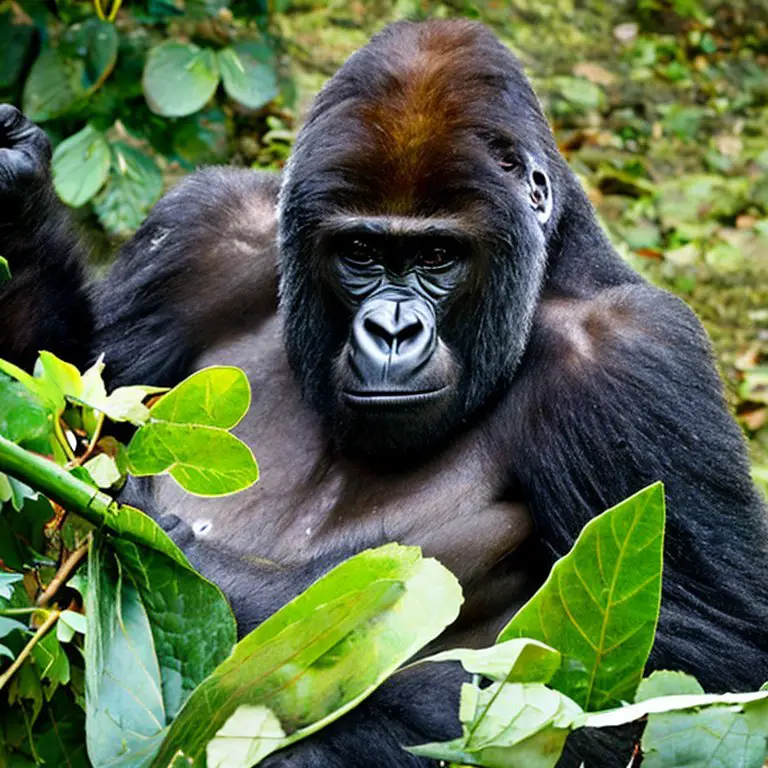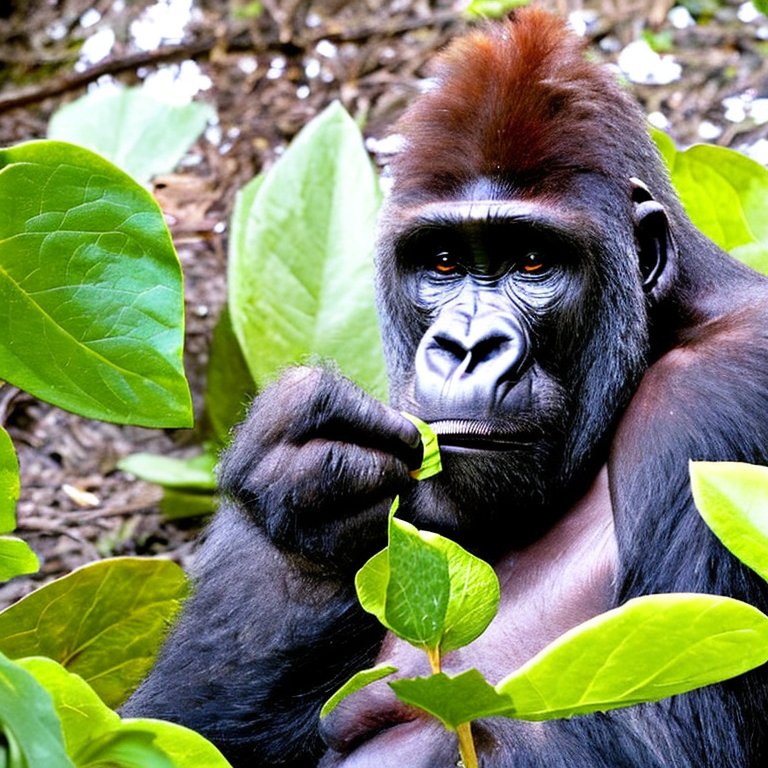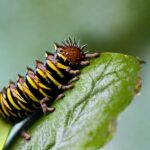
We will learn about folivores, including what they are, what animals are folivores, what folivore teeth are like, as well as other common questions.
Contents
- What are Folivores?
- Folivores and the Ecosystem
- The Teeth of Folivores
- Folivore Animals
- Frugivores vs Folivores
What are Folivores?
Folivores are animals that primarily feed on leaves. They are herbivores, which means that they only eat plants, and they have specialized adaptations that allow them to efficiently extract nutrients from leaves. (You can learn more about herbivores at Animals That Only Eat Plants & What They Are Called and Herbivores – Guide to Plant-Eating Animals)

Folivores are found in a wide variety of environments, from tropical forests to temperate woodlands, and they play a vital role in the ecosystems where they live.
Some examples of folivores include elephants, gorillas, deer, rabbits, and koalas. These animals have evolved a variety of adaptations that enable them to survive on a diet of leaves, which are low in nutrients and can be difficult to digest.
For example, elephants and gorillas have large, strong stomachs that are able to break down tough plant fibers, while deer and rabbits have long, sharp teeth that allow them to quickly and efficiently chew their food.
(You can find examples of all herbivores at Examples of Herbivore Animals)
Folivores and the Ecosystem
Folivores are important for the health of the ecosystems where they live. By feeding on leaves, they help to maintain the balance of plant species in an area, and they can also play a role in seed dispersal. For example, when an elephant eats a fruit and then defecates, it can spread the seeds of that fruit over a wide area, which can help new plants to grow and thrive.
Folivores are also important for the health of the animals that depend on them. For example, many birds and small mammals rely on folivores for food, and the presence of folivores can help to support a diverse and healthy ecosystem. Additionally, folivores are often a key food source for larger predators, such as lions and wolves, and the presence of folivores can help to support the health of these animals as well.
Despite the important role that folivores play in their ecosystems, they are often threatened by human activities. Deforestation, habitat loss, and poaching can all have a negative impact on folivores, and many species are at risk of extinction. For example, the mountain gorilla is classified as critically endangered, and there are fewer than 1,000 individuals left in the wild.
Conservation efforts are crucial for the protection of folivores, and there are many organizations and individuals working to protect these animals and their habitats. For example, the World Wildlife Fund (WWF) is a global conservation organization that works to protect the forests and wildlife of the world, including folivores. By supporting organizations like the WWF, individuals can help to ensure that folivores are protected and can continue to thrive in their natural habitats.
So, folivores are animals that primarily feed on leaves, and they play a vital role in the ecosystems where they live. They are important for the health of plants, animals, and the environment, and they are often threatened by human activities. Conservation efforts are crucial for the protection of folivores, and individuals can help to support these efforts by supporting organizations that work to protect these animals and their habitats.
The Teeth of Folivores
One of the most important adaptations that folivores have is their teeth. Folivore teeth are specially designed to help these animals efficiently chew and digest their food. Folivores have a variety of different types of teeth, including incisors, canines, premolars, and molars.

Folivore incisors are sharp and pointed, and are used for cutting and tearing food. These teeth are typically located at the front of the mouth, and are used to strip leaves from branches and to rip apart tough plant fibers. Folivore canines are longer and more pointed than incisors, and are used for piercing and holding onto food. These teeth are typically located next to the incisors, and are used to grip and tear tough plant materials.
Folivore premolars and molars are larger and flatter than incisors and canines, and are used for grinding and crushing food. These teeth are located towards the back of the mouth, and are used to break down tough plant fibers and to help extract nutrients from leaves. Folivore molars are typically the largest and most powerful teeth, and are used to crush and grind tough plant materials.
Overall, folivore teeth are highly specialized and are essential for helping these animals to efficiently chew and digest their food. By adapting their teeth to their diet, folivores are able to extract the maximum amount of nutrients from leaves, which is essential for their survival. Whether they are cutting, tearing, piercing, grinding, or crushing, folivore teeth are a key part of these animals’ ability to thrive in their natural habitats.
Folivore Animals
Folivore Birds
The Hoatzin is the only completely herbivore bird, which is also a folivore. You can learn more about it and other herbivore birds at Are Birds Herbivores?
Primate Folivores
Are Gorillas Folivores?
Yes, gorillas are folivores. Folivores are animals that primarily feed on leaves, and gorillas are a type of primate that primarily feeds on leaves.

Gorillas are also herbivores, which means that they only eat plants, and they have specialized adaptations that allow them to efficiently extract nutrients from leaves.
Are Monkeys Folivores?
Some monkeys are folivores, while others are not. Folivores are animals that primarily feed on leaves, and some monkey species are adapted to feed on leaves as their main source of food. These monkeys are herbivores, which means that they only eat plants, and they have specialized adaptations that allow them to efficiently extract nutrients from leaves.
Monkeys that are folivores are typically found in a wide variety of environments, from tropical forests to temperate woodlands. They have large, strong stomachs that are able to break down tough plant fibers, and they have long, sharp teeth that allow them to quickly and efficiently chew their food.
Examples of folivorous monkey species include leaf monkeys, howler monkeys, and spider monkeys. These monkeys have evolved a variety of adaptations that enable them to survive on a diet of leaves, which are low in nutrients and can be difficult to digest. For example, leaf monkeys have large, flexible fingers and toes that allow them to grasp and manipulate leaves, while howler monkeys have long, prehensile tails that help them to move through the trees and access leaves and other plant materials.
Folivorous Primates Body Size
Folivorous primates are typically larger in size than other primates, such as monkeys and apes. This is because their diet of leaves requires a larger body size in order to extract the necessary nutrients. For example, gorillas are one of the largest primates, and they can weigh up to 450 pounds.
In addition to their larger body size, folivorous primates also have a number of other adaptations that help them to survive on a diet of leaves. For example, they have large, strong stomachs that are able to break down tough plant fibers, and they have long, sharp teeth that allow them to quickly and efficiently chew their food.
The larger body size and specialized adaptations of folivorous primates are essential for their survival on a diet of leaves. Leaves are low in nutrients and can be difficult to digest, and the larger body size and specialized adaptations of folivorous primates help them to extract the maximum amount of nutrients from their food.
Overall, folivorous primates are larger in size than other primates, and this is an important adaptation for their diet of leaves. Their larger body size and specialized adaptations enable them to efficiently extract the necessary nutrients from their food, and this is essential for their survival in their natural habitats.
Frugivores vs Folivores
Frugivores are animals that primarily feed on fruit, while folivores are animals that primarily feed on leaves. Both frugivores and folivores are herbivores, which means that they only eat plants, and they have specialized adaptations that allow them to efficiently extract nutrients from their food.
Lance has been passionate about the plant-based diet and we have been following a whole food plant-based diet for over 5 years. We focus on health, natural healing, weight management, animal rights, and the health of the planet and environment by focusing on whole plant-based foods and sustainable practices.
Learn more at the About Me page and follow on social media at the links below.






